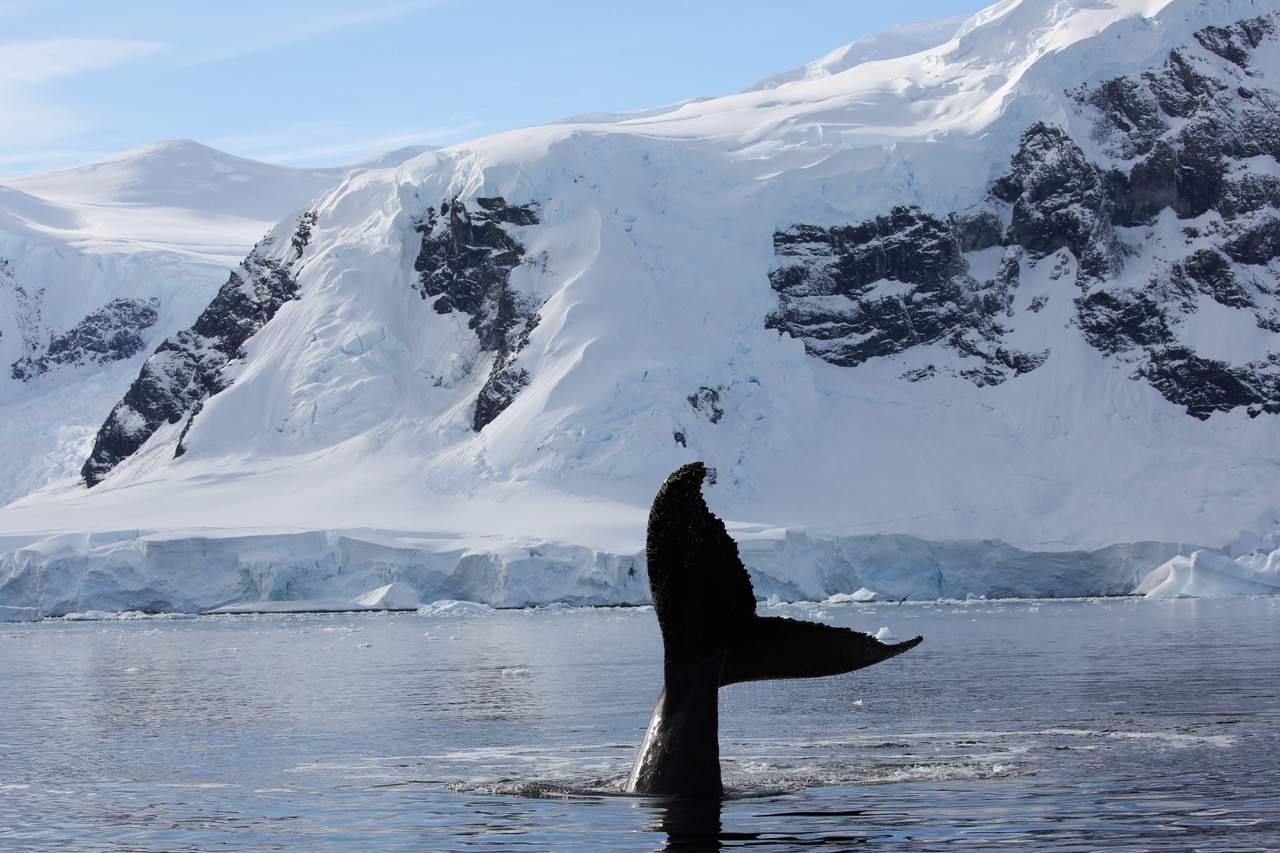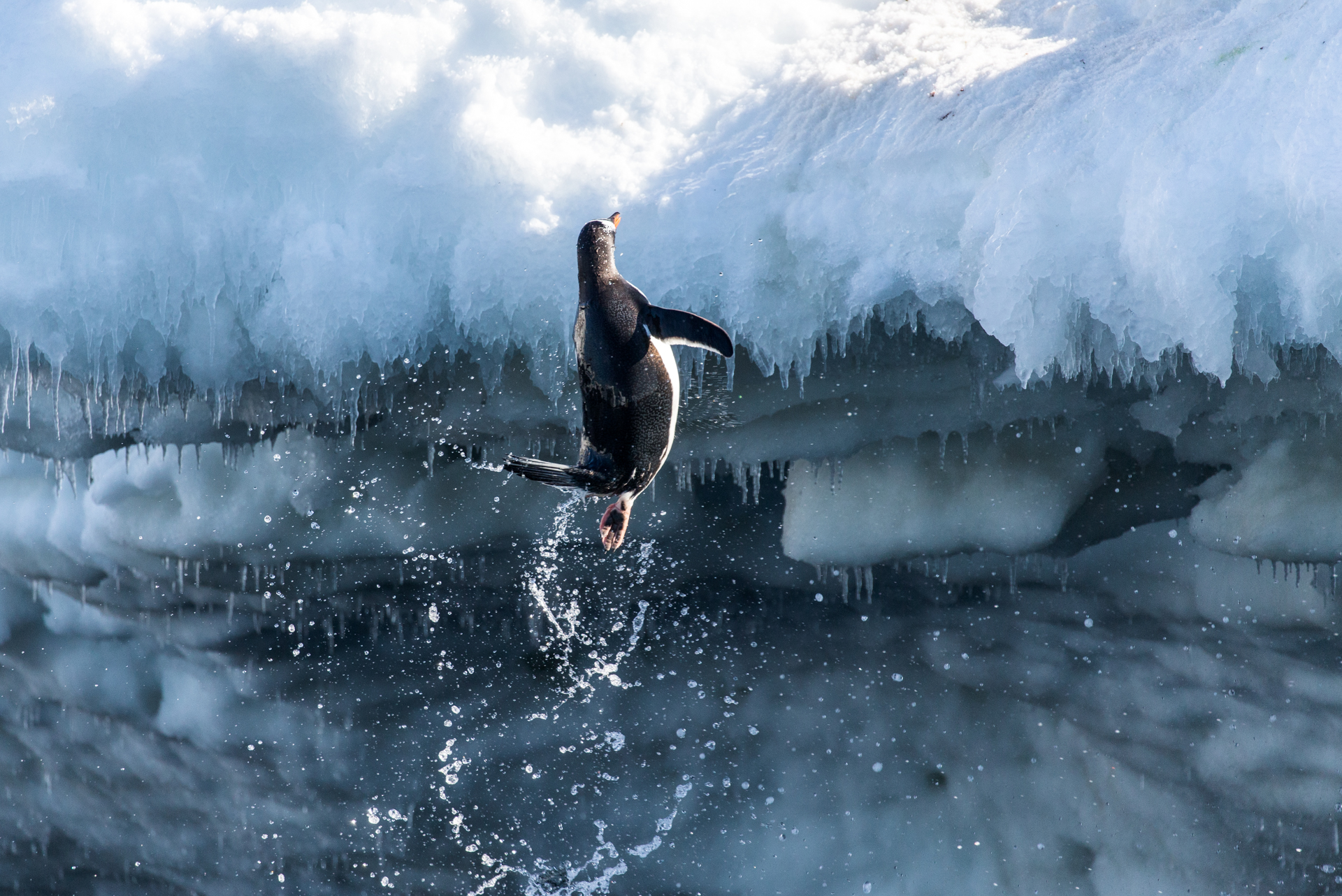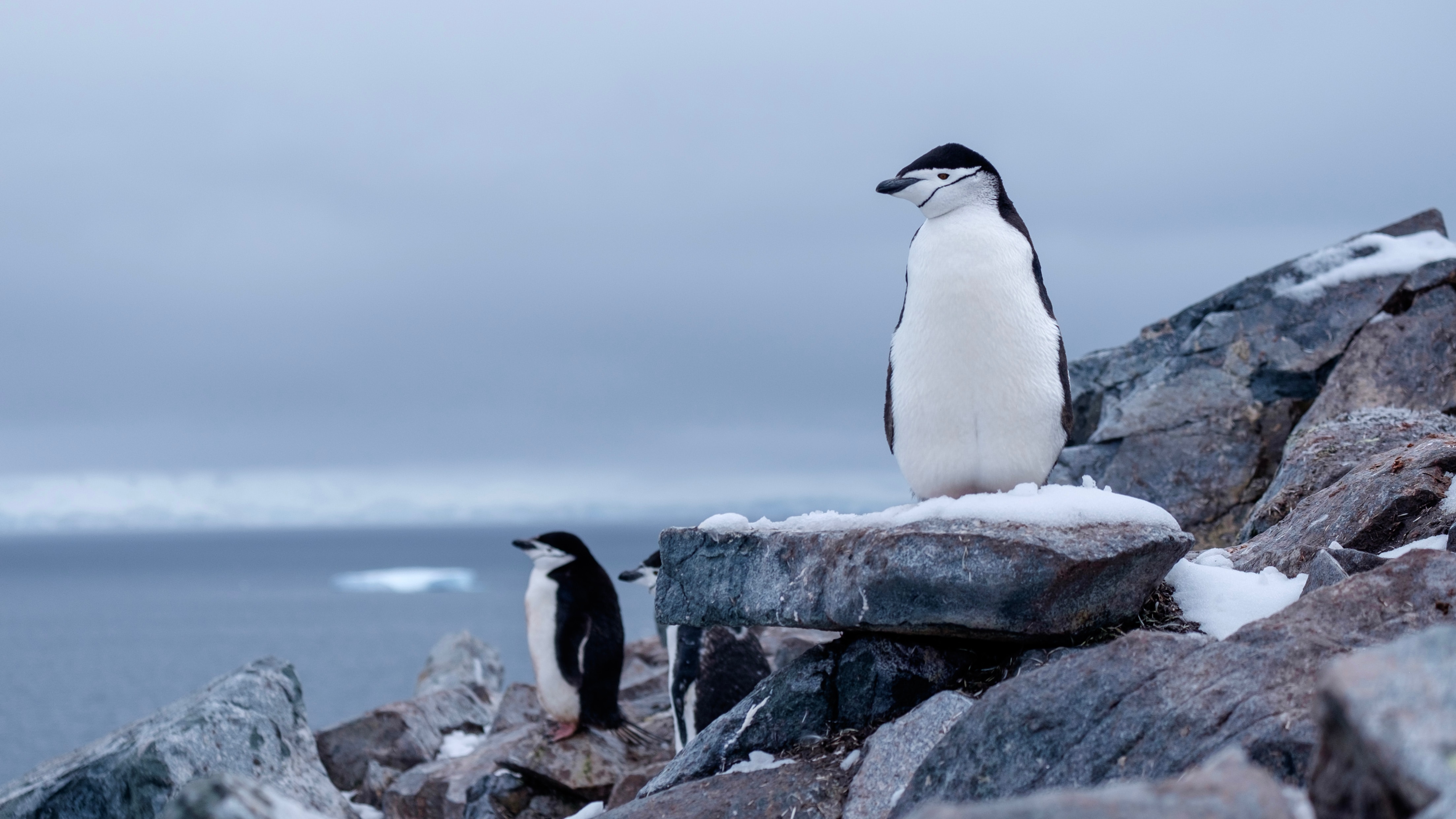There’s something about the white wilderness that gets into your soul and inspires you to do more.
Years ago, many polar field staff were uncomfortable addressing climate change. We felt under-qualified and that it was too much of a hot potato. Attending Al Gore’s Climate Reality Project is what gave me the confidence to start speaking about it. This followed into some online coursework on sustainability and years later I have become the chair of IAATO’s Climate Change Committee – all because I went South as a guide, and I was moved to action.

Antarctica is a slice of wilderness that represents the best of our planet at its most pristine. That wild and unspoiled vastness enables us to see how our planet, without all our anthropogenic impacts, could be. All the trappings of modern life, cities and all the stuff we buy, eat and move around; they are the antithesis of how it feels in Antarctica. Our lifestyles have impacts that undermine all wilderness areas and our planet.
If you have the urge to take your Antarctic ambassadorship journey to the next level you can start by considering and mitigating your own impacts on our planet and then take that concept to your spheres of influence – your family, your friends, your school, your place of work, your company, your town hall, etc.
An Antarctic Ambassador is someone who:
- Loves and respects the region,
- Educates others by sharing their Antarctic experiences,
- Advocates for Antarctica when opportunities arise, and
- Protects the region by making positive changes at home.

When you decide to understand your impact on the planet it’s helpful to do a flowchart audit; what comes into your life (all the things you use and eat and move and do) and what goes out? Water, food, fuel, products: where do those things come from and where to the outputs go? There may be some negative impacts to obtaining certain products such as deforestation, mining and harmful chemicals. Generally, there is a bunch of plastic and fuel involved in how they get to you, and generally speaking they end up discarded, quite soon, to live in a dump. This is the story of stuff in a linear world. For decades most of us have been blissfully unaware of how stuff gets to us and what happens to it afterwards, but it’s never been easier to gain this knowledge and start to be a more conscious consumer.
Shifting towards less ‘stuff’, sustainably and locally sourced, with no single-use plastics, and that can be re-used or repaired or recycled afterwards will significantly reduce your impact. The water that you have used and goes down your drain afterwards, is it clean or full of cleaning chemicals? The food you eat, is there massive deforestation and pesticides attached to its acquisition, unsustainable harvest? Where do all the plastics you discard end up? Your old clothes, electronics, homeware? How much stuff in the landfill is yours? Campaigns like JUMP with a ‘less stuff, more joy’ ethos can help you rethink your ‘stuff.’ The trend towards more sustainable stuff is growing exponentially and needs your buy-in!
It’s a rather overwhelming dilemma, because the world has been set up this way, but all you can do is to be aware of what you use / eat / move and where it ends up afterwards – and start to shift to fewer, and more sustainable, things. Shift and, perhaps, you can go further … such as advocate for change, spread the word, spend money on protecting wilderness areas and biodiversity, get involved in greening and re-wilding projects, make your garden, even if it’s just a small patio, a home for a few plants and insects. [Watch 9 Things You can Do for Your Health and the Planet. ]

All the aforementioned things also have a contribution to climate change and for that audit, things are a bit more organised. You can easily enter all your lifestyle choices into a free calculator and figure out what YOUR greenhouse gas footprint is. If you have a comfortable lifestyle, you probably have quite a high and unsustainable greenhouse gas output – simply because of the way we have designed our modern world. But you can make choices to reduce your greenhouse gas footprint. Do the calculation, figure out what your big impact items are (maybe it’s many short-haul flights, maybe it’s your car or heating / cooling your home, maybe it’s the red meat you eat). When you know what your impact is comprised of, you can start to set reduction targets. (refer to Stella’s climate change blog series)
What should you be aiming for? Well, 90% of countries have agreed that we want to keep climate change to below 2°C above pre-industrial levels by the end of the century, and preferably 1.5°C. The best scientific advice tells us that in order to achieve 1.5°C, we all need to reduce our emissions by 23% by 2030 and 75% by 2050 (that’s with an overshoot and return to 1.5°C) OR 43% by 2030 and 84% by 2050 with no overshoot. So that’s what you need to aim for, it’s what we all need to aim for; countries, companies – everyone.
Overwhelming as it is, the science is clear, and so we all just need to embark on this journey to understand and reduce our impacts.
Understand. Reduce. Spread the word.
About the Author | Pam Le Noury

Pam is Head of Expedition Operations with an IAATO Operator, and actively involved in marine science and conservation projects at home in South Africa. She sits on IAATO’s Education & Outreach Working Group and is the chair of the Climate Change Committee. Her passion is to help individuals and small businesses make sense of climate change and understand what they can and should be doing about it.




